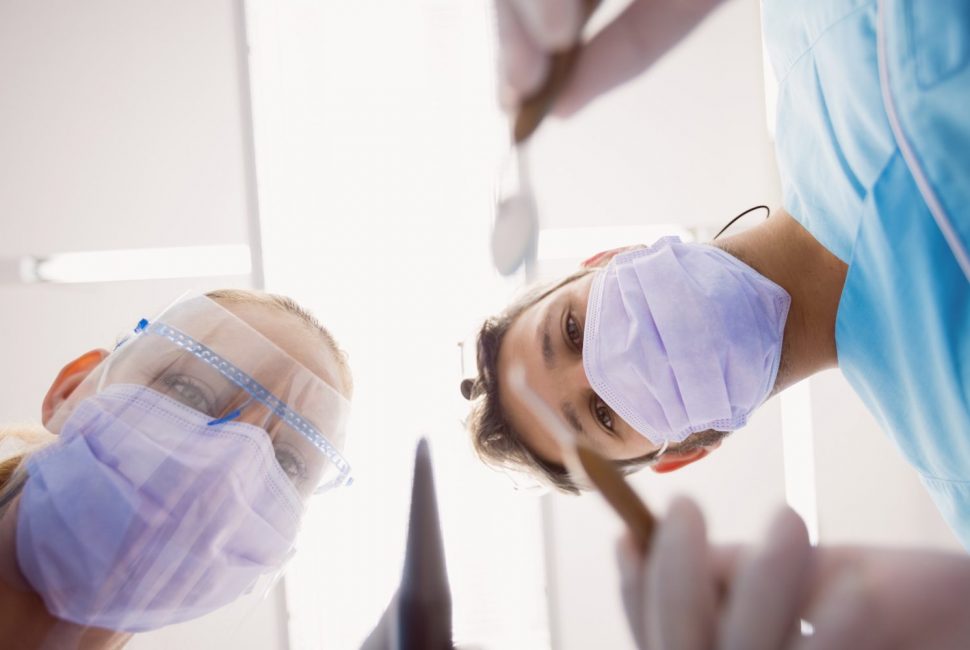Jaw Surgery Recovery: What to Expect and How to Prepare

Jaw surgery, or corrective jaw surgery, is an orthodontic procedure aimed at realigning the jaw to improve both function and facial symmetry. As you embark on your journey towards a healthier, more balanced smile, it’s crucial to understand the ins and outs of jaw surgery preparation and recovery.
When Is Jaw Surgery Necessary?
Jaw surgery is needed to correct a skeletal overbite and is usually only performed on adults.
Surgery can reposition the jaw when braces aren’t enough to correct it.
How to Prepare for Jaw Surgery
Proper preparation is crucial for a successful jaw surgery recovery. Here are some steps to help you get ready:
- Consultation: Before the surgery, consult with your oral surgeon and orthodontist to discuss your treatment plan. We will assess your individual needs and provide you with a comprehensive overview of what to expect.
- Diet Planning: In the weeks leading up to your surgery, start transitioning to a soft-food diet. Stock up on nutritious and easy-to-consume items like soups, smoothies, and yoghurt.
- Post-Op Care: Familiarise yourself with your surgeon’s post-operative instructions. These guidelines will be invaluable during the immediate recovery phase.
- Support System: Ensure you have a support system in place to assist you during your recovery, especially during the initial days when you may have limited mobility and require extra care.
- Patience: Finally, prepare yourself mentally for the recovery process. Healing takes time, and while it might seem challenging at times, the end result will be a healthier, more balanced smile.
Corrective jaw surgery is a transformative procedure that can enhance both the function and aesthetics of your smile. By understanding the recovery process and being well-prepared, you can embark on your journey with confidence, knowing that a more balanced and beautiful smile awaits at the end of the road.
What to Expect From and Ask Your Orthodontist Before Jaw Surgery
Your orthodontist plays a crucial role in the success of your jaw surgery journey. Here’s what you can anticipate from specialists and what questions to ask:
- Comprehensive Assessment: Before undergoing jaw surgery, your orthodontist will conduct a comprehensive examination of your dental and facial structure. They will assess your bite, alignment and how your teeth come together. Learn more about the common kinds of bite problems here.
- Treatment Plan Discussion: Your orthodontist will discuss your treatment plan in detail. This includes explaining the purpose of the surgery, the expected outcomes, and how it aligns with your overall orthodontic treatment.
- Braces or Aligners: Depending on your specific needs, the orthodontist will recommend the use of braces or clear aligners. They will discuss the role these orthodontic appliances play in preparing your teeth for surgery and ensuring proper alignment post-surgery.
- Pre-Surgery Orthodontic Adjustments: Your orthodontist may make adjustments to your braces or aligners to ensure your teeth are in the optimal position for surgery. These adjustments are part of the preparation for the procedure.
Types of Jaw Surgery
Before we continue to post-surgery with your orthodontist – let’s talk about the different types of jaw surgery.
Orthognathic Surgery
Orthognathic surgery focuses on correcting misalignments of the jaw. This includes procedures such as maxillary osteotomy for the upper jaw and mandibular osteotomy for the lower jaw.
Bimaxillary Osteotomy
Another type is double jaw surgery, or bimaxillary osteotomy, where both the upper and lower jaws are repositioned to achieve a harmonious bite.
Continued Orthodontic Treatment
In some cases, jaw surgery may be combined with orthodontic treatment, such as braces, to ensure the best possible outcome. The type of jaw surgery you require will depend on your specific condition and the goals you have for your smile and overall oral health.
What to Expect From Your Orthodontist After Jaw Surgery
- Post-Surgery Recovery Plan: Your orthodontist will be a key part of your post-surgery recovery. They will guide you on how to maintain proper oral hygiene and care for your oral appliances, whether it’s braces or aligners.
- Orthodontic Adjustments: After your jaw surgery, you’ll continue to see your orthodontist for adjustments. These appointments are essential for fine-tuning your bite and ensuring your teeth align correctly
- Questions to Ask: Don’t hesitate to ask questions during your post-surgery orthodontic visits. Inquire about the progress of your treatment, expected timelines for achieving your desired results and any concerns you may have regarding your oral health.
- Monitoring Healing: Your orthodontist will monitor the healing of your jaw and the progress of your orthodontic treatment. They’ll ensure that everything is proceeding as planned and make any necessary adjustments along the way.
What to Expect After Different Kinds of Jaw Surgery
Recovery from jaw surgery is a process that requires time, patience, and proper care. The extent of your recovery depends on various factors, including the type of surgery you had and your individual healing abilities. However, there are some general guidelines to help you understand what to expect during the recovery period.
- Jaw Surgery Recovery Time: The recovery timeline varies, but most patients can anticipate some degree of swelling and discomfort for the first few weeks. Full recovery typically takes several months, with improvements in your jaw alignment becoming more evident as time goes on.
- How Long Does Jaw Surgery Take to Heal: On average, it takes around 6 to 8 weeks for the initial healing phase. However, complete healing may take longer, often spanning several months.
- Double Jaw Surgery Recovery: Double jaw surgery, also known as bimaxillary osteotomy, involves repositioning both the upper and lower jaw. Recovery from double jaw surgery may be more challenging, but the benefits are often transformative.
- Bottom Jaw Surgery Recovery: Recovery after bottom jaw surgery, or mandibular osteotomy, focuses on realigning the lower jaw. The healing process may involve adjustments in diet and lifestyle to facilitate a smoother recovery.
- Jaw Surgery Recovery Pictures: It’s natural to want to see visual representations of what recovery entails. You can find before and after pictures that provide a tangible look at the transformation and healing journey patients go through.
- Jaw Surgery Before and After: Jaw surgery’s before-and-after results can be astonishing. The changes in jaw alignment and facial appearance are often remarkable, demonstrating the effectiveness of the procedure.
To learn more about treatments, visit our treatments page.


